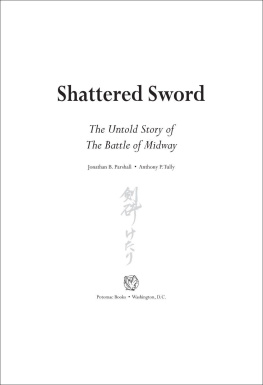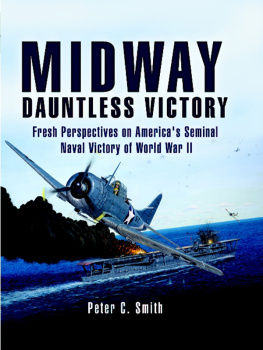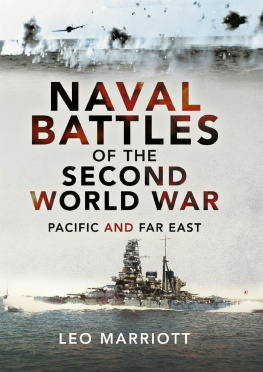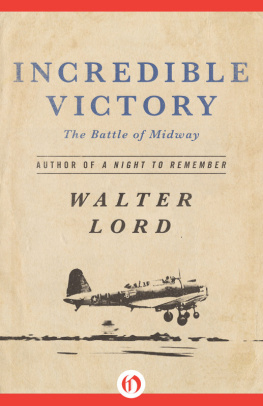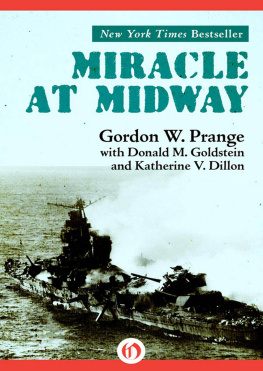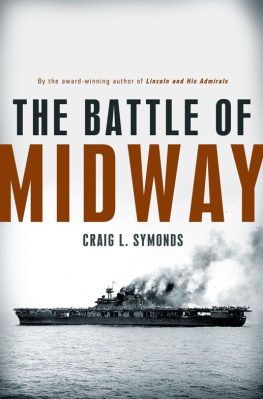
Shattered Sword
The Untold Story of The Battle of Midway
Jonathan B. Parshall Anthony P. Tully


First Paperback Edition 2007.
Copyright 2005 by Jonathan Parshall and Anthony Tully.
Published in the United States by Potomac Books, Inc. All rights reserved. No part of this book may be reproduced in any manner whatsoever without written permission from the publisher, except in the case of brief quotations embodied in critical articles and reviews.
Library of Congress Cataloging-in-Publication Data
Parshal, Jonathan, 1962
Shattered sword: the untold story of the Battle of Midway / Jonathan Parshall and Anthony Tully.
p. cm.
Includes bibliographical references and index.
ISBN 978-1-57488-923-9 (hardcover : alk. paper)
1. Midway, Battle of, 1942. 2. World War, 19391945Naval operations, japanese. 3. World War, 19391945Naval operations, American. 4. World War, 19391945Aerial operations, Japanese. 5. World War, 19391945Aerial operations, American. I. Tully, Anthony, 1961II. Title.
D774.M4P37 2005
940.5426699dc22
2005011629
ISBN 978-1-557488-924-6 (paperback: alk. paper)
Designed and typeset by jonathan Parshall.
Printed in the United States on acid-free paper that meets the American National Standards Institute Z39-48 Standard.
Potomac Books, Inc.
22841 Quicksilver Drive
Dulles, Virginia 20166
First Edition
10 9 8 7 6 5 4
Jon Parshall dedicates this book to
Margaret, Anna, and Derek,
and to
the late Dr. David C. Evans, whose kindness
and collegiality rekindled a young mans dormant
interest in the IJN and set him on this path.
Tony Tully dedicates this book to
Dan, Kay, and Matt Tully, Heather Cooper,
and his nieces and nephews, who speak of their writer uncle,
and to
the late Walter Lord, whose careful sifting of facts
and rich narrative inspired my own style and love of history,
and whose help honored our work.
Contents
List of Figures
Acknowledgments
Tony and I fortuitously have found ourselves at the center of a nexus of technology, friends, and community created in the late twentieth century, and are profoundly grateful to all three. The advent of the Internet, and the spontaneous creation of globe-spanning communities of interest it fostered, truly revolutionized the way we were able to approach and assemble this book. By leveraging the Web, we were able to identify and then contact the right people to elucidate almost any arcane matter. Not only that, but the answers to questions that would have taken months to retrieve back in the old days of, say, a decade ago often came back to us within hours. We both consider ourselves extremely fortunate to have ridden on the cusp of such a providential technological transformation.
Of course, the people we met during the process of creating Shattered Sword were ultimately far more important than the communication medium that connected us to them. It has been our privilege to have widened our circle of associates enormously during this endeavor and to have made many genuine friends along the way. It is no exaggeration to say that this book is, in a sense, a vast collaborative effort on the part of the wider Japanese naval history community. The research and insights of many extraordinary people on both sides of the Pacific can be found within these pages. We are profoundly grateful to them for agreeing to let us benefit from their acumen and apply the fruits of their hard work. It is appropriate, therefore, that we acknowledge their efforts first and foremost.
At the top of the list stands historian John Lundstrom, whose fine books on the Pacific war have been mainstays of its students for twenty-five years. This could easily have been Johns book, had he chosen to write it. Instead, he gave openly and generously from his vast store of wisdom on the topic of the Pacific war in general, and Midway in particular. He has been our tireless advocate, adviser, and friend always pointing out new sources we might have overlooked, new perspectives we might not have considered. This book literally would not have been possible, let alone had the depth of insight it seeks to deliver, without Johns selfless collegial efforts and constant encouragement. We are deeply in his debt.
Noted aviation historian Tagaya Osamu, despite his hectic professional schedule, gave liberally of his time to review and critique our manuscript. Sams intimate knowledge of Japanese naval aviation, and his detailed, well-considered comments, saved us from numerous factual errors, gaffes in Japanese terminology and pronunciation, and other problems that would have damaged the credibility of this work. Sams father, Tagaya Yoshio, a former Imperial Japanese Navy technical officer, likewise made helpful suggestions for the kanji on the books section headers.
James Sawruk is known to serious students of the Pacific air war as the undisputed master of the Japanese operational records. Jim generously translated the carrier air group records for both Midway and the Aleutians operations, which appear here in English for the first time. Jim also provided numerous insights into Japanese aviation technique, as well as American aviation operations. His information provides an important cornerstone of the operational bedrock on which our account is based.
Mark Peattie, coauthor of two groundbreaking studies of the Imperial Navy, has been a firm friend since 1996. The work I did for Mark on Sunburst served as my apprenticeship in this trade, and Mark has taught me much of what it means to be a good scholar and a good colleague. Marks gentle comments on the initial manuscript, much like Sam Tagayas, were instrumental in channeling the enthusiasm of my initial prose into a style more likely to weather the test of time, for which I am grateful.
David Dickson, perhaps the foremost Western expert on Japanese naval doctrine and carrier design, provided us with a constant stream of ship plans, doctrinal tracts and other documents and, most important, his well-honed comments. David might well have been a coauthor of this work had not other commitments intruded, but he has been a first-rate collaborator regardless. In the same vein, J. Michael Wenger, noted expert on both Pearl Harbor and the Indian Ocean battles, aided us with his consummate knowledge of Japanese carrier operations and his deep understanding of the Japanese source materials. Mike also provided many of the pictures that grace this volume. Eric Bergerud, author of several well-received volumes on the Pacific war, similarly lent his advice and encouragement and was a sounding board during many pleasant evenings spent at my home.
Mark Horan, coauthor of A Glorious Page in Our History, augmented and synthesized Jim Sawruks operational information and added to it with his extensive interviews of the American Midway aviators. Marks detailed knowledge of the American side of the battle greatly informed our interpretations and graphics for the various American aerial attacks at Midway. Tony is particularly grateful for Marks discussion of interviews that provided clues for reconstructing the Japanese formation at various times during 4 June. Likewise, Robert Cressman, Marks coauthor and historian at the Naval Historical Center, imparted his wisdom on many issues, as well as giving the entire manuscript a very thorough going over, thus eliminating many errors of fact and terminology. Special notice must be taken of the late, widely respected Walter Lord, who in his last years graciously agreed to contribute important unpublished original interviews and notes from his own Midway research. Our thanks likewise go Mr. Lords personal secretary, Lillian Pacifico, who conscientiously and efficiently arranged for copying and forwarding these materials to us.
Next page
